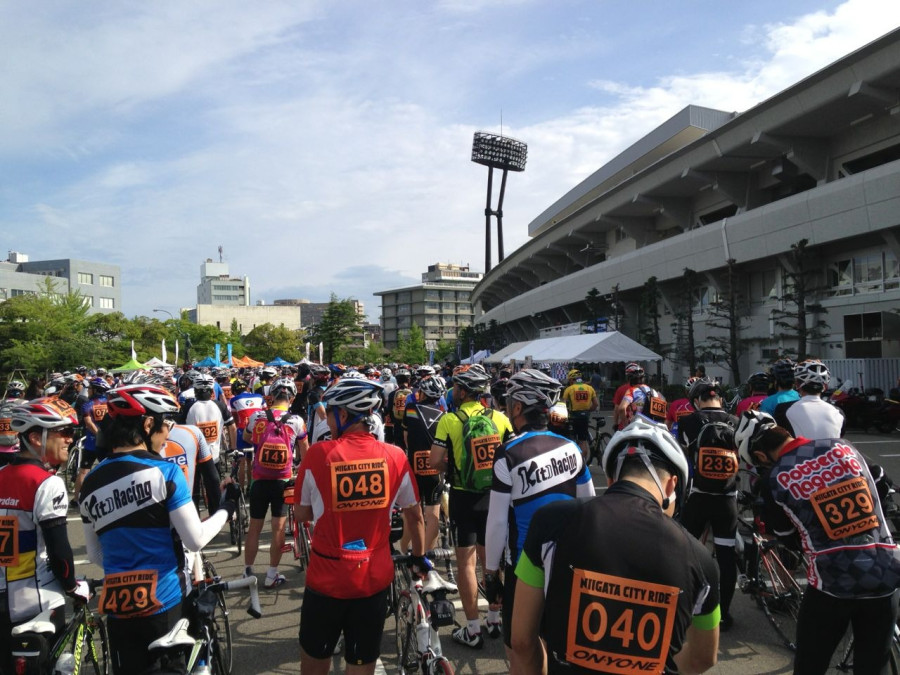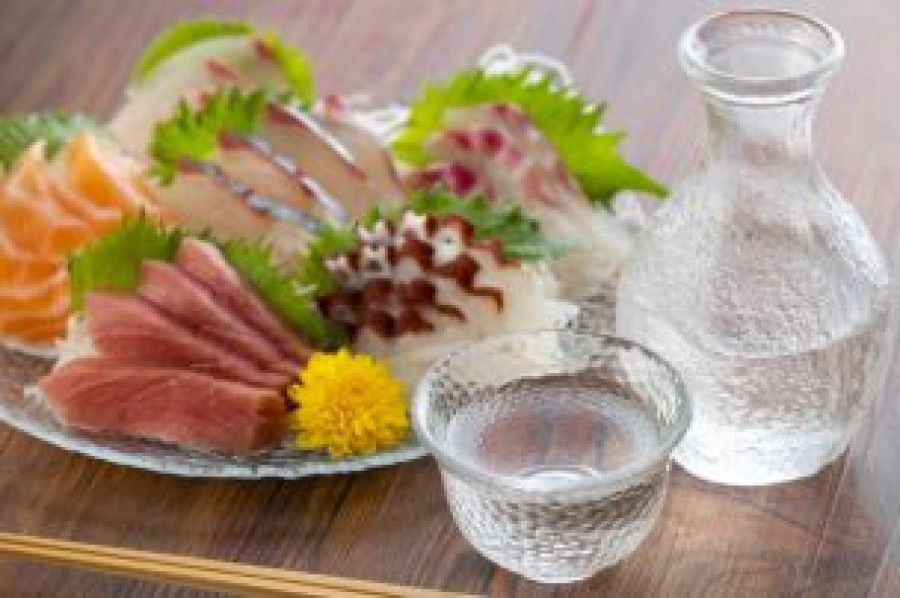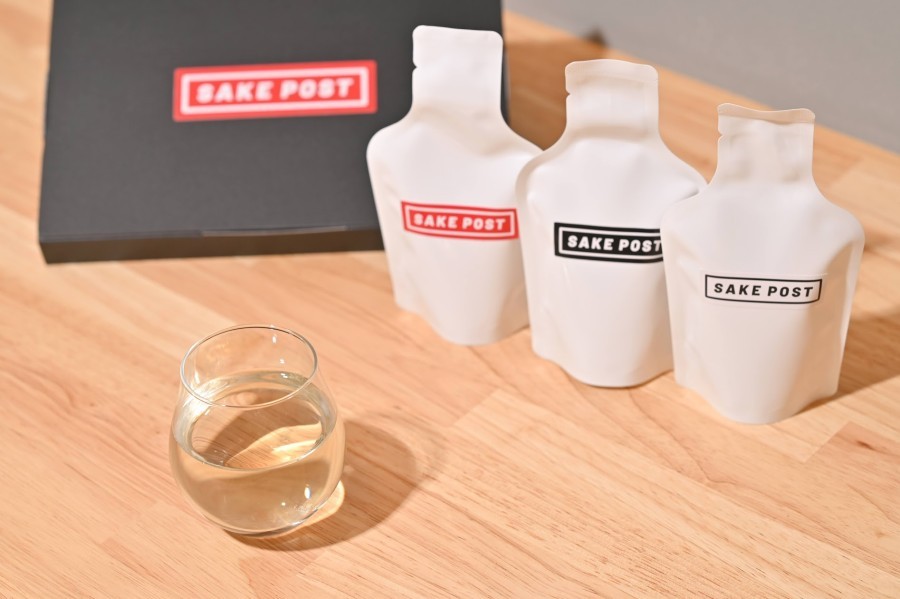It's been a while since people started talking about the bicycle boom, but if you go outside on a nice day off, you frequently see people riding bicycles.
Well, you know, eco-friendliness, diet, health-consciousness and all sorts of other things are probably pushing it. So it's no surprise that there are many female cyclists who are sensitive to such things. The influence of a bicycle manga called 'What a Pedal' is also said to be a big factor.
This is why there are still many cycle events as the bicycle boom is still ongoing. Even in the snowy country of Niigata, it's on-season except in winter, so it's easy to organise events because of the long enjoyable period.
Well, on 8 June I took part in a cycling event called Niigata City Ride, so I thought I'd give some information to those of you who might be thinking of taking advantage of this boom and starting to ride a bike. I'm riding a bike myself, so I don't have any photos of me on the bike, but don't worry about that.
The reception opens at 6:00 a.m. I left at 4:00 a.m., taking into account the time to eat breakfast, as I was heading from Nagaoka.
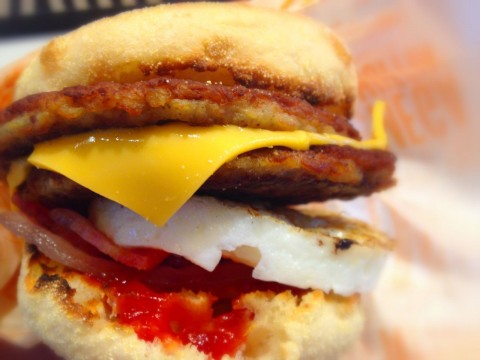 By the way, breakfast is a mega muffin from McDonald's. Before the ride, I had a protein supplement with meat, eggs and cheese. I also drank Super Verm, which is said to help burn fat.
By the way, breakfast is a mega muffin from McDonald's. Before the ride, I had a protein supplement with meat, eggs and cheese. I also drank Super Verm, which is said to help burn fat.
It was raining in Nagaoka and Sanjo, but fortunately it was sunny in Niigata City. This is thanks to me being a sunny man.
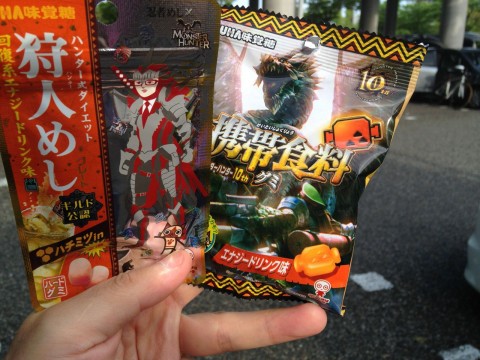
It's kind of a joke, but I bought some portable food at the supermarket on the way. I eat them when I run out of energy on the road, but I really recommend the highly concentrated power gels sold in bike shops.

When we arrived at the meeting point, the athletics track, there were already a lot of bike riders there. Some of them were very unique charlies.
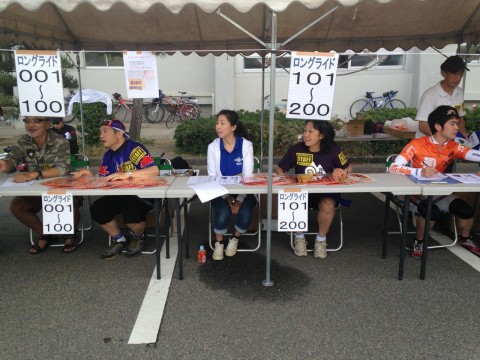
You exchange the information letter you received in advance for a number at the reception desk. At most events, you are given two numbers: a sticker to put on your helmet and a number to attach to your back with a safety pin.
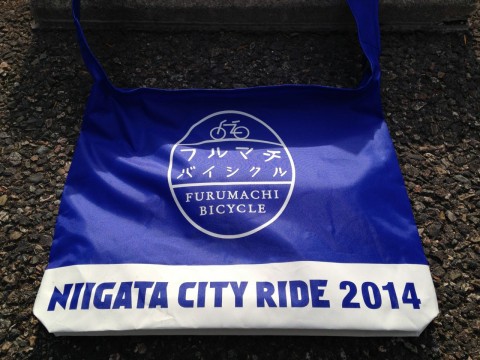
I was given a bag as a souvenir, but it was too cumbersome to carry on my back, so I went to my car to put it down. I am still considering how to use this bag.
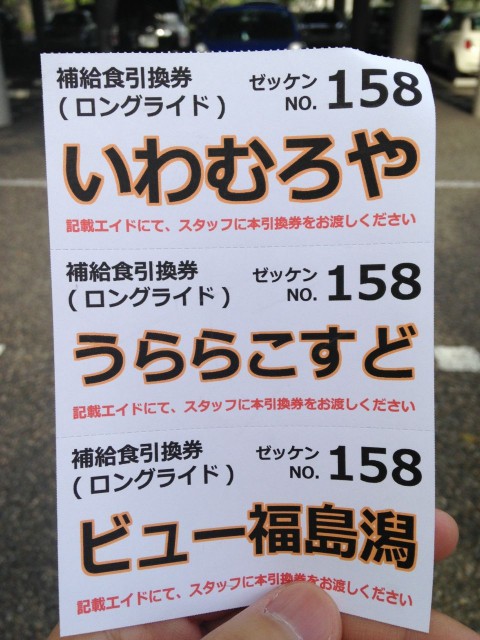
At cycle events, rest points called 'aid stations' are set up in the middle of the ride. At aid stations, drinks and snacks are provided, and this is an exchange ticket. The information said "If you lose it, buy it at a convenience store and eat it", so this is the one thing you can never lose.
I use an iPhone app to log my runs, and according to the past logs, I burn about 3,500 kcal for 120 km. This is not a lot of calories that can be covered by the body's own energy, so it is important to take energy at aid stations. However, it is recommended to carry a small amount of high-calorie gel, as mentioned above, so that you can replenish your body's energy needs while riding, in addition to the aid stations.
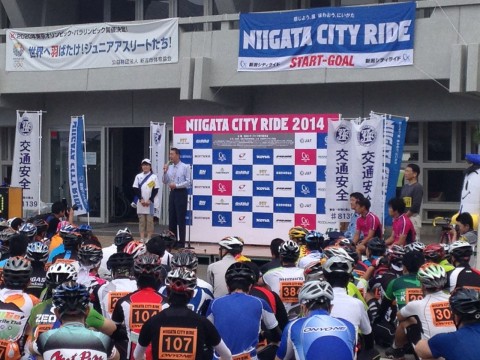
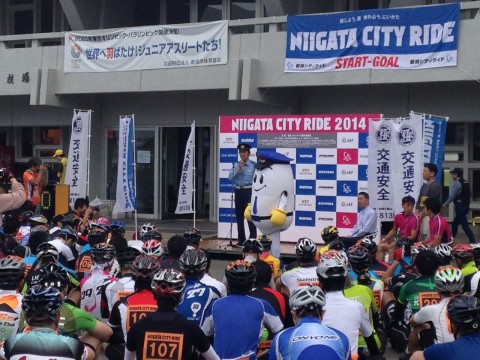 Opening ceremony from 07:00. Address by Mayor Shinoda of Niigata City and a warning from the prefectural police. The police talk about traffic safety, as they do at all events, but the talk is surprisingly light-hearted and not stiff and formal.
Opening ceremony from 07:00. Address by Mayor Shinoda of Niigata City and a warning from the prefectural police. The police talk about traffic safety, as they do at all events, but the talk is surprisingly light-hearted and not stiff and formal.
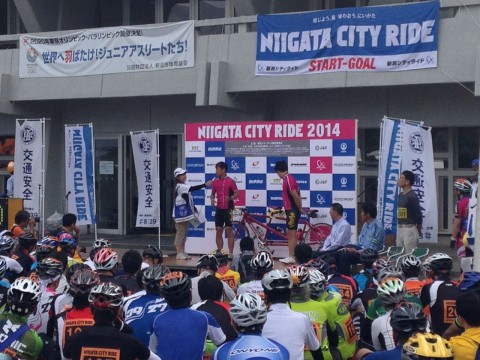
The Niigata City Ride was also open to participants on "tandem" bicycles, which allow two people to ride together. Sasaki and Motohashi, who finished seventh in the tandem sprint at the Sydney Paralympics, were invited to participate as invited riders, and their pledge to the riders was very cool and loud.
This tandem vehicle allows visually impaired people to pedal as hard as they like in the back. However, it is dangerous if the pilot in the front and the stoker in the back do not communicate well, so it requires a lot of practice and mutual trust.
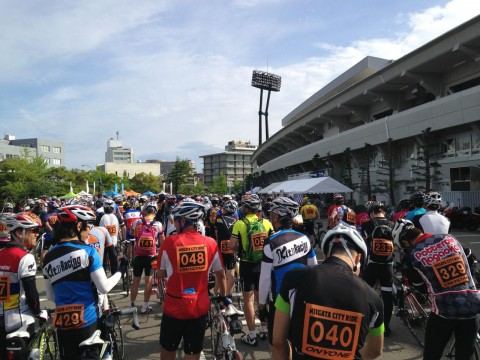
Well, now it's time to start - 7:30am start time, but because there were so many of us, we started in sections of 10 people each. But time seemed to be running out, so the second half started with 20 people at a time. I started at about 7:50.
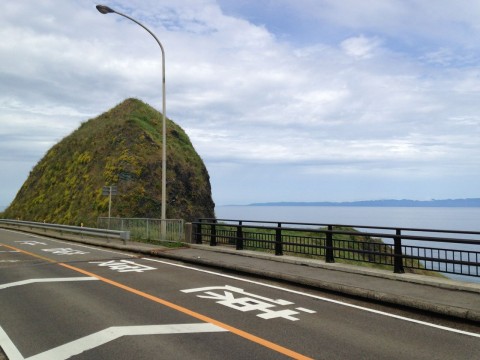
First, take National Road 402 and drive along the coast.
After less than 30 km or so, we turn east and head ze towards Iwamuro.
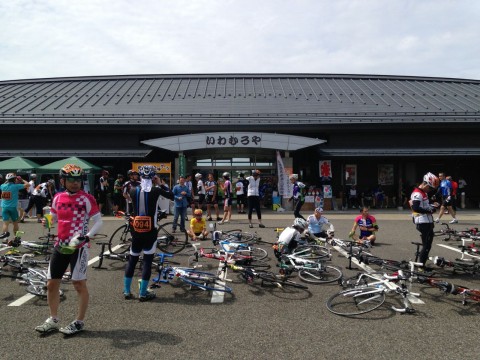
This is the first aid station, Iwamuraya. It's 35km to here and takes about one and a half hours.
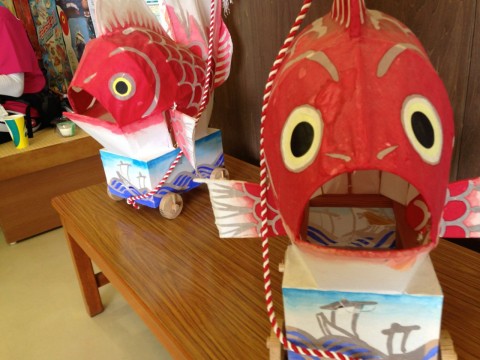
Iwamuroya is a fun place to visit on a regular basis, with exhibits such as the "taiwaguruma" (sea bream wheel) and products for sale.
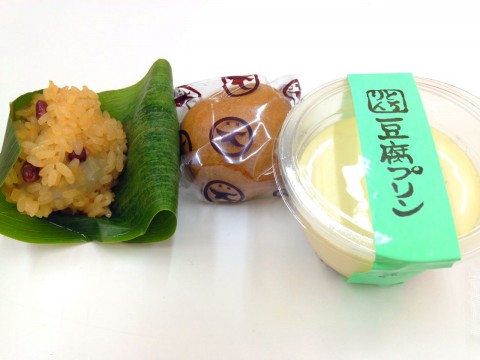
This is the refreshment you've been waiting for. Here, Iwamuro's specialities - okowa dumplings, onsen manju and tofu pudding - were served.
These okowa dumplings are extremely tasty! The sweetness of the red bean paste and the taste of the soy sauce mix in your mouth to create a sweet and savoury taste. The standard onsen manju (hot spring buns) are also consistently good, and the tofu pudding is a refreshing, less-sweet supplement to your yuitsu!
The okowa dumplings are from Kakunoya Etsudo and the tofu pudding is from Kofujiya. The onsen manjyu is a little hard to identify, but in any case, it is a sweet that can be enjoyed in Iwamuro Onsen. There is also a famous gelato shop 'Regalo' nearby, so you can enjoy a sweets tour in Iwamuro alone.
From Iwamuro, take Prefectural Road 55 and Prefectural Road 9 eastwards for a while to Kosudo.
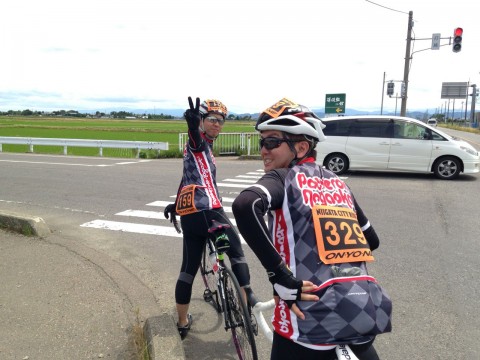
In the photo are the team members who are participating together. Yes, we have a loose cycling team called 'Potarole Nagaoka', so if you are a newcomer to cycling, please give us a call.
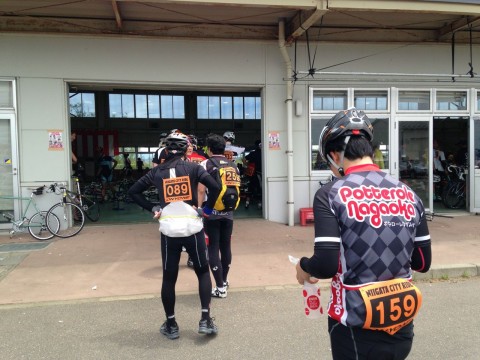
Arrived at the second aid station, Urara Kosudo. Total 63km, 2 hours 40 minutes. This is pure running time, excluding breaks.
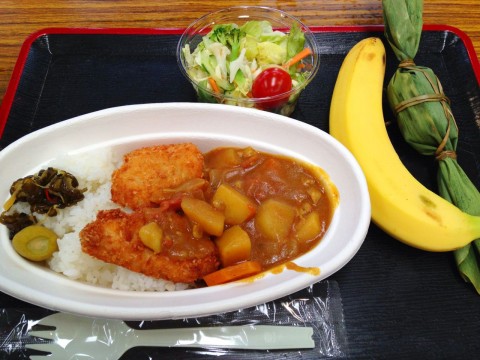
The place seemed to be positioned as a lunch place, and we were given a salad, curry, bananas, bamboo dumplings and plenty of other refreshments. It is unfortunate that the amount of food for one person is fixed and you can't have another serving. What is it about curry that makes you want to have more rice? The bamboo grass component of the bamboo grass dumplings was so thick that they were more black than green. The fibre was so visibly noticeable that you could enjoy the rich bamboo grass taste. Where was this bamboo grass dumpling from?
And from this distance, food that can be converted into immediate energy is very much appreciated. It's bananas. Even if you think you can't run any longer, eating a banana will mysteriously allow you to run for one more stroke. I would like you to allow me to eat as many bananas as I want.
Finally, exhaustion so bad that no photos can be taken on the road. From Kosudo, head northeast to Fukushima Lagoon.
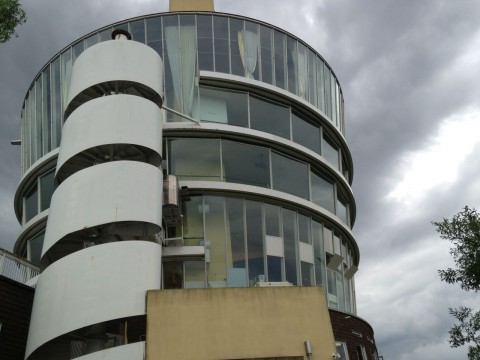
The last aid station, View Fukushima Lagoon. Inside there is a museum shop selling goods and an observation hall overlooking Fukushima Lagoon. Recommended for a date, if you have a partner.
So far I've covered a total of 93 km, or 4 hours and 20 minutes. Incidentally, my speed is quite slow and I'm running almost last.

The rations here consisted of bean tempura, frozen crepes and carrot juice. The crepes are from a shop called Taishodo in Toyoei. Normally, you're supposed to thaw them and eat them, but it was hot, so it was good that they were frozen. Despite the fact that it's so creamy and small that it fits in one hand, it's quite filling. And then there's the bean tempura. It seems to be sold at the roadside station in Toyoei, but it has a nice salty taste! The beans, oil and saltiness make you want to have a beer with it.
You're sweating a lot, so it's also a good source of salt. Finally, there is carrot juice, which is shockingly thick. It's more like grated carrot than juice. It's like eating juice, and this is the first time I've had carrot juice this thick. I think the carrot juice must have come from Toyoei, but I forgot to check. This is a drink I would like to have again.
Now, one more push. 27 km left to head north-west from Fukushima Lagoon.
Unfortunately, it was pouring rain as we neared the finish line. Hence the photo ends here.
Returned to the athletics track soaking wet to finish! Received a certificate of completion and the event was over. Total 120km, completed in 6 hours. Including breaks, it would have taken more than eight hours.
The distance of 120 km is quite demanding, so much so that muscle aches already start to appear during the run, but it is very pleasant to run while enjoying the beautiful scenery and feeling the wind. The food at each aid station is also something to look forward to.
Many cycle events offer long rides of over 100 km as well as shorter distances. It is a good idea to try out the shorter distances first, and then try the longer rides as you get used to them.
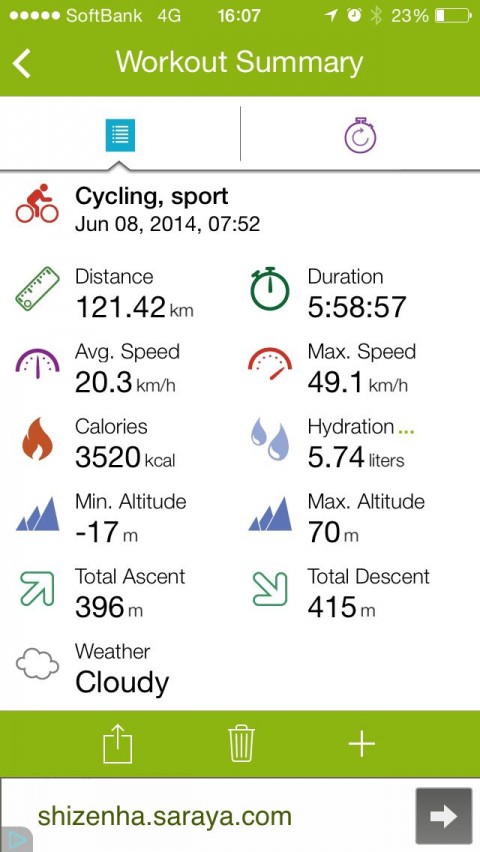
Oh, one thing to note if you're thinking of taking part in a cycle event. Distance is an indicator of the difficulty of an event, but in addition to distance, there is another indicator called 'elevation gained'. This is how much elevation is gained by combining all the climbs on the entire course. In other words, it is the total amount of ascent.
The Niigata City Ride this time is mostly flat and the elevation gain is about 400 m. Depending on the event, the same 120 km ride can be as high as 2,000 m. You should always check the elevation gain before signing up!
See you then.
2014 Niigata City Ride event information.
▶ Date and time: 8 June, Heisei 26 (sunrise)
▶ Venue of departure and arrival: Niigata City Athletics Stadium (Location: 3-1 Ichibanbori-dori-machi, Chuo-ku, Niigata City).
▶ Category 1: Long ride (120 km) Starts at the Niigata Athletics Track, travels around the city and finishes at the Athletics Track. Mainly rides on roadways.
- Discipline 2: Short ride (33 km) Starts at Niigata City Athletics Track, travels around Niigata Island, Toriyano Park, etc. and finishes at the athletics track. Mainly on cycling roads.
- From the City of Niigata 2014 Niigata City Ride guidelines page.
advertisement


